ACROSS THE MEADOW AND THROUGH THE WOODS
On the 7th of July 2021, I spent some time walking the unpaved road that leads across the meadows and through the woods in the area not far from where I live.
In this post, you'll see some insects, spiders, and other small details that I encountered along the way.
It was late in the evening. I left my car by the side of the road a couple of kilometers from the village called Shishan situated six or seven kilometers north of Medulin, my hometown. The sun was low in the sky, and as you can see in the above photograph, the light passing through the dense growth of shrubs and small trees was really beautiful.
The beetle shown in this shot was photographed in the meadow.

The name of the species is Epicauta rufidorsum, the family is Meloidae, and the insect was resting on the top of the Trifolium alexandrinum plant, a type of clover purposely grown to be harvested and stored as a forage.
In their adult stage, these beetles also love to chew the clover, while the larvae feed mainly on grasshoppers' eggs.
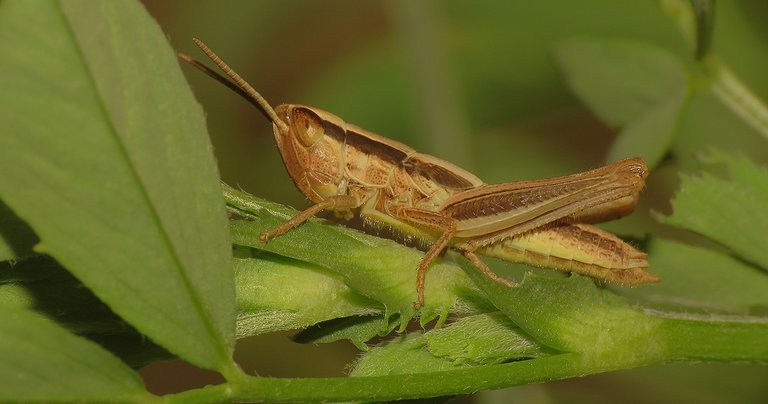
There is no shortage of grasshoppers and their eggs in the meadows during the summer. Here you can see a nymph, the young, not completely developed version of the common straw grasshopper (Euchorthippus declivus).

Species from the Meloidae family are commonly known as blister beetles and like all blister beetles, Epicauta rufidorsum can release a defensive secretion that can burn your skin. However, I feel safe near them because they aren't very eager to do that, in my experience. They'll probably burn you only if you squeeze them.
Here you can see another insect that I found on one of the many Trifolium alexandrinum plants in that area. This is a cicada. Cicadetta mediterranea is the name of this species that doesn't sing like most other cicadas in this area, high on the trees, but down on the ground, on the grass, and on various herbaceous plants instead. The spider, shown in the following shot ...
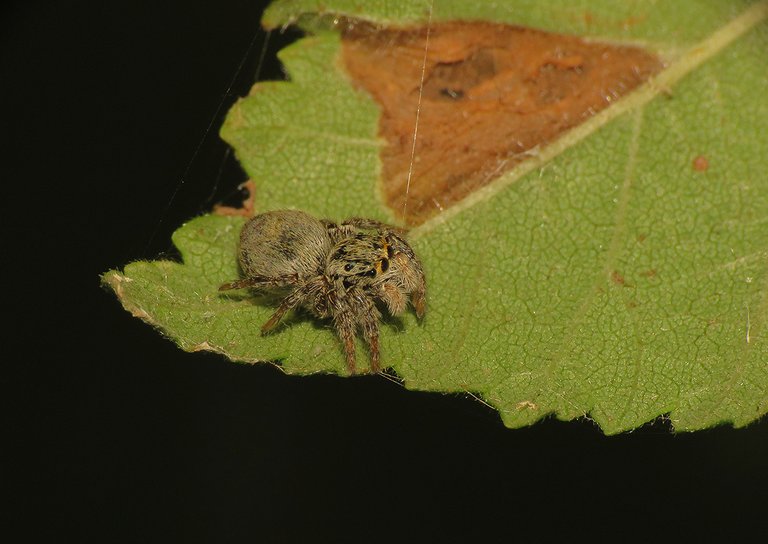
... was photographed on the leaf of the small Ulmus minor tree on the edge of the meadow.
Here you can see another leaf of that small tree. This one was photographed in beautiful ambient light provided by the sun in the late afternoon.
When it comes to the jumping spider, I can't tell you the name of the species. The family is Salticidae, of course.
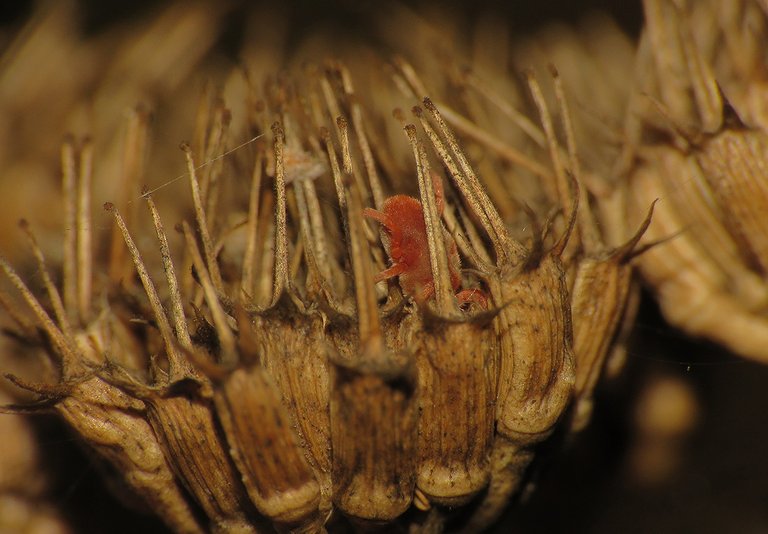
Here you can see a cluster of seeds and a small red detail among them. The seeds belong to a dried-out plant that grew under the Ulmus minor tree, a plant that I wasn't able to identify.
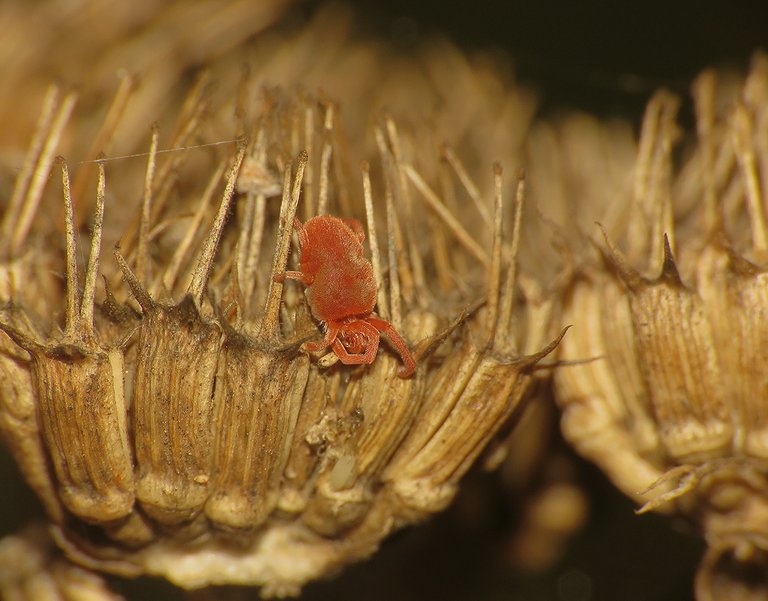
The little red arachnid found on the seeds ...
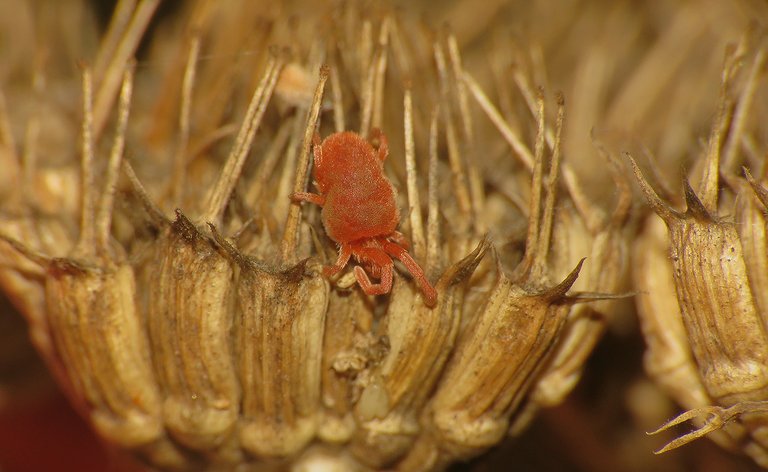
... is a mite.
The name of the species is Trombidium holosericeum. While the adults like the one shown in this series of four photographs wander around and feed on insect eggs and various tiny animals, the larvae are parasites that live attached to insects and bigger arachnids. Grasshoppers and harvestmen are the most common hosts. There is another stage in the development of this species, between the larva and the adult. The nymph. The nymphs resemble adults and hunt like them, but they cannot reproduce before reaching the final stage.

These lovely flowers belong to the Clinopodium nepeta plant. In the following photograph ...
... I came closer with the macro lens and I used the flash of my camera to get a strong outburst of light that can show every little detail. You can enlarge the picture by clicking on it.
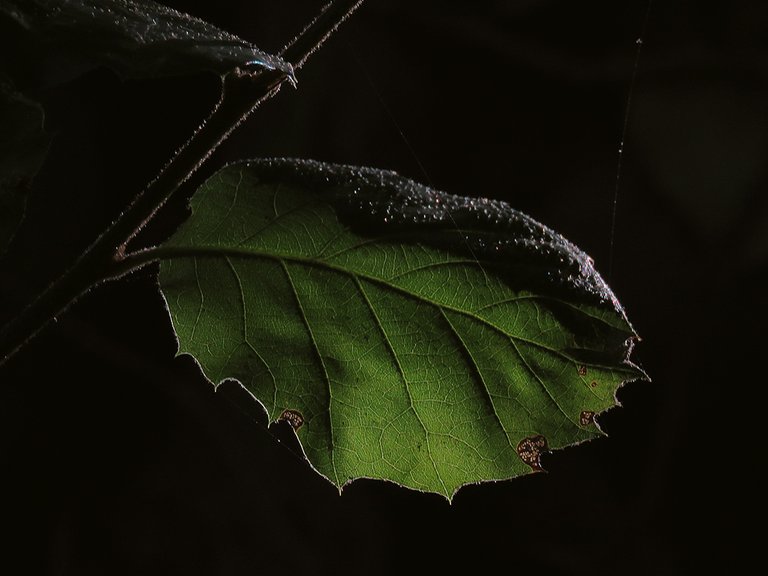
Here you can see a leaf photographed in the backlight provided by the sun situated low above the western horizon. I wasn't able to identify the plant. All I can tell you is that the leaf belongs to a small tree or a shrub.
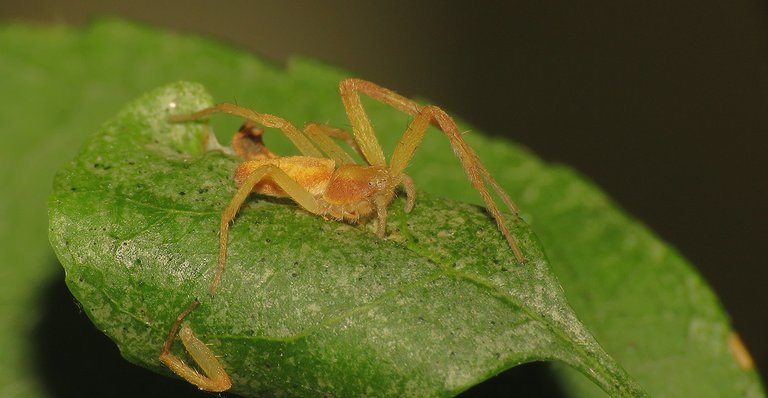
On another small tree or a shrub, I found a spider from the Philodromidae family. This Philodromus rufus was resting on the upper surface of the leaf. I took this photograph, and then ...
... the spider ran to hide on the leaf's underside. On the nest built there. This Philodromus rufus is a female that guards the nest. Despite the missing legs, three of them on one side of the body, the spider was very fast and agile.

In this photograph, you can see the interesting nymph of the Metcalfa pruinosa planthopper.
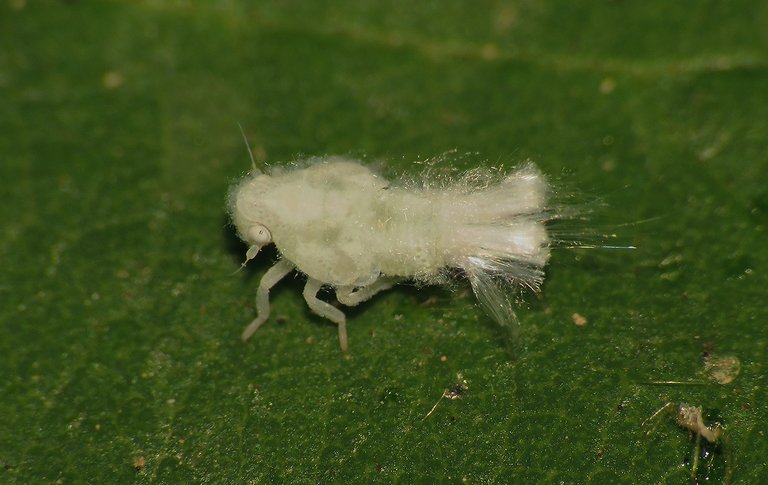
It was photographed on another shrub in the same area. I haven't seen any adults around, only a bunch of these fluffy nymphs covered with waxy filaments.
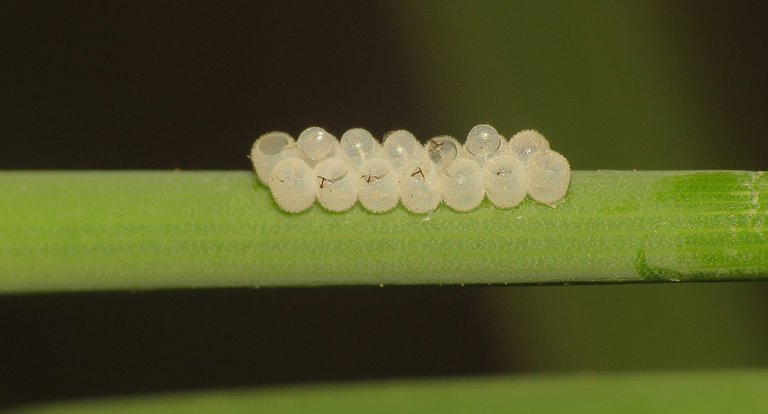
On the grass under the shrubs and trees, I found a cluster of tiny eggs. These eggs were produced by some shield bug (Pentatomidae family) but I can't tell you what species exactly. Anyhow, the eggs are already hatched. The nymphs are somewhere out in the world.
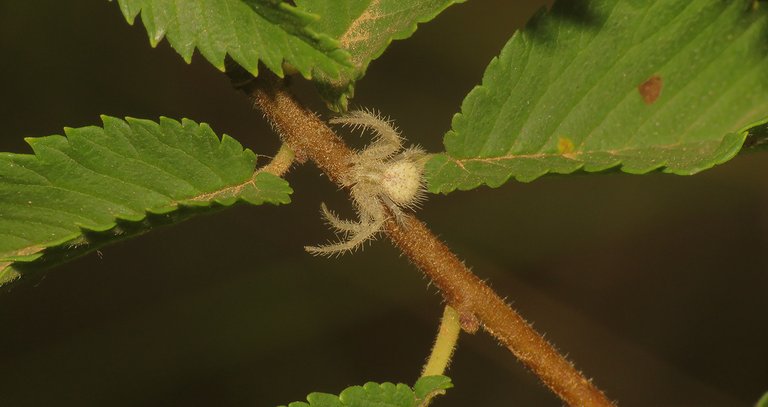
A bit further along the road, after some more walking and exploring around, I came across another small Ulmus minor tree and I found another interesting spider on its branches.
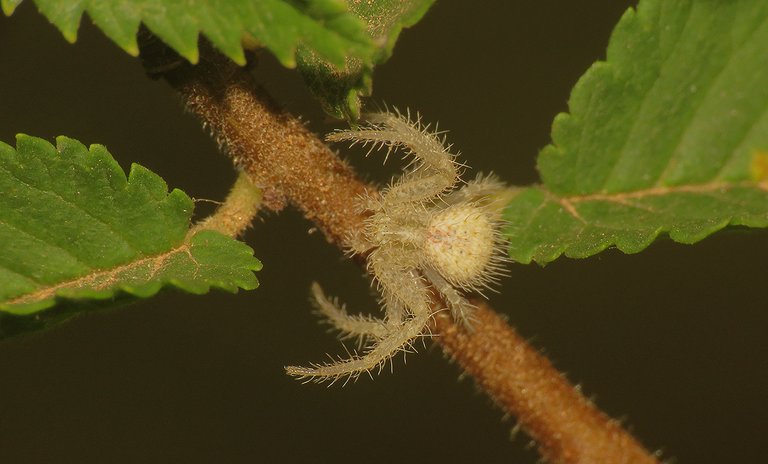
This is the Heriaeus hirtus, a species from the Thomisidae family.
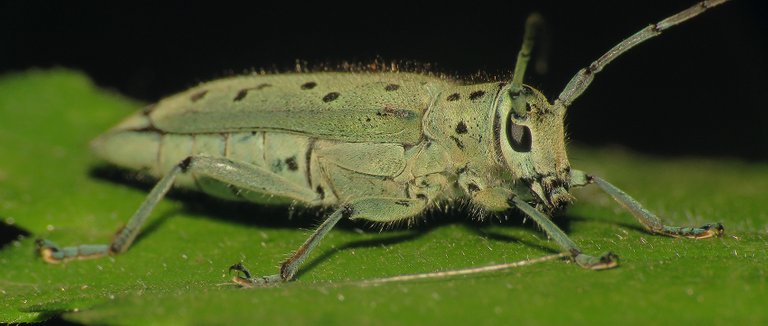
Here you can see a beetle that I have never seen before the 7th of July 2021.
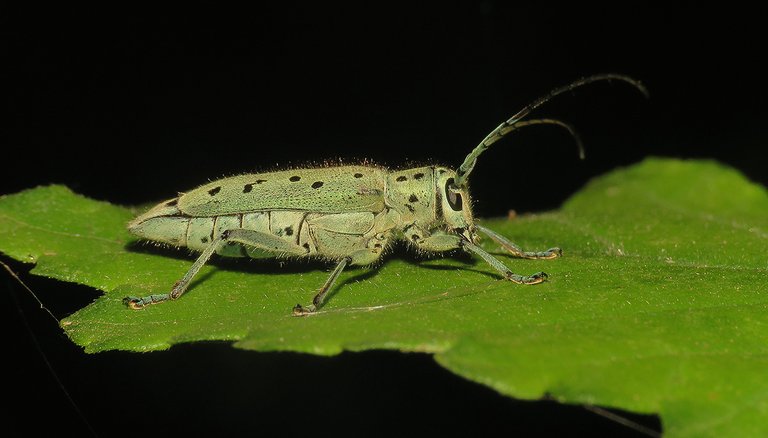
I mean, I never encountered this insect in nature, but I remember seeing it in some old books.

This is the Saperda punctata, a longhorn beetle from the Cerambycidae family. I mean, species from the Cerambycidae family are commonly known as longhorn beetles. One good look at their long antennae, and is immediately clear why they are called that way.
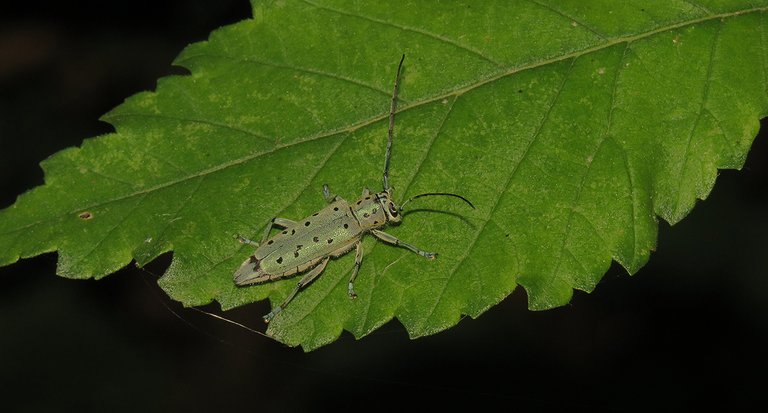
Saperda punctata is a nocturnal species, usually well hidden during the day.

The larvae grow and feed under the bark in dead trunks or large branches of various species of oak (Quercus) and elm (Ulmus) trees.
In the middle of the small meadow, not far from the place in which the longhorn beetle was photographed, I came across an adult Euchorthippus declivus grasshopper. I showed you the young nymph of this species earlier in the post, you'll find it near the beginning.
Also there, on the meadow, I photograph this small butterfly. The Plebejus argus. This is the male. In the following photograph ...

... you can see the female.
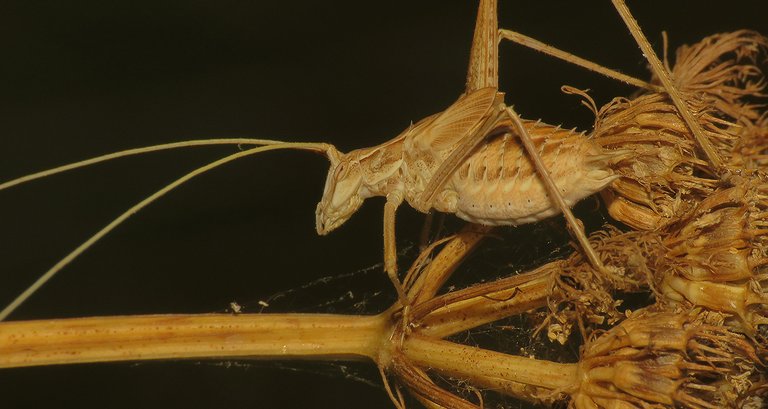
Here you can see the nymph of the Tylopsis lilifolia bushcricket.
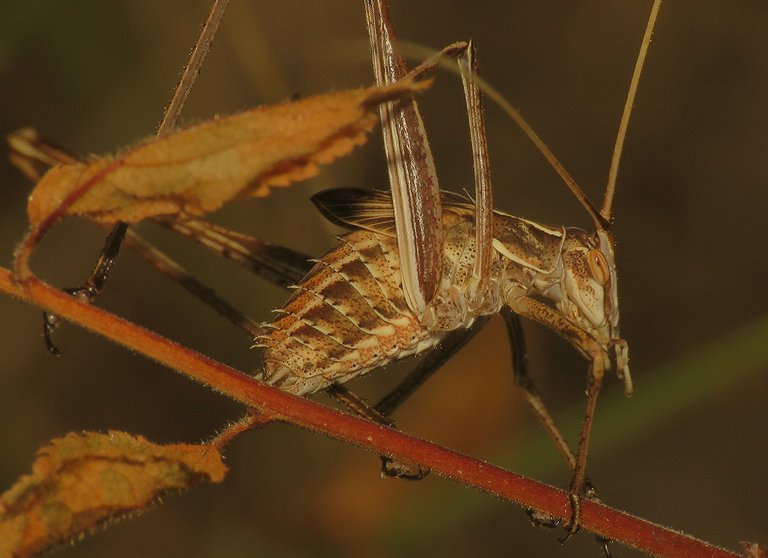
This slightly smaller and younger nymph of the same species is a bit darker. The color of nymphs and adults in this species varies from shades of brown and gray to shades of green.
If you take a good look at this shot you may find a well-camouflaged insect in it.
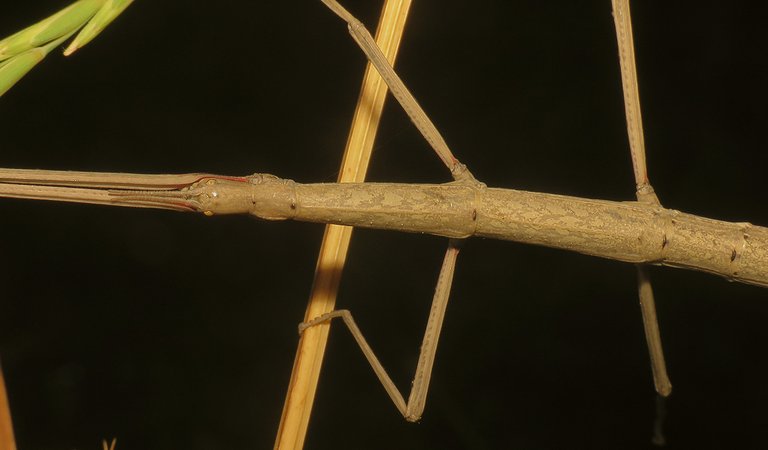
This is the Bacillus rossius ...
... commonly known as the Mediterranean stick insect.
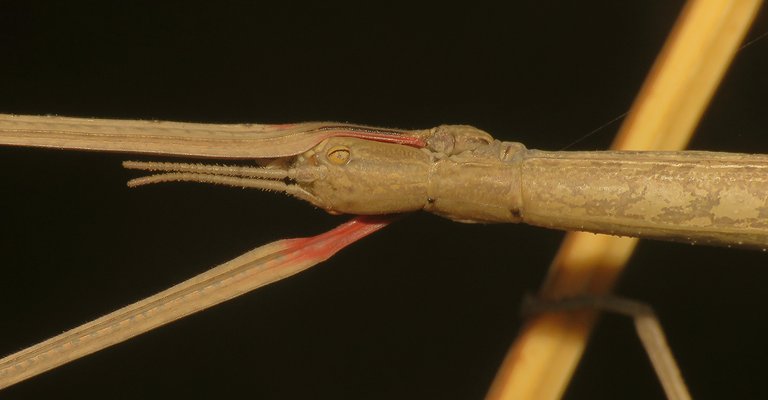
In this photograph, you can take an up-close look at the head of the insect.
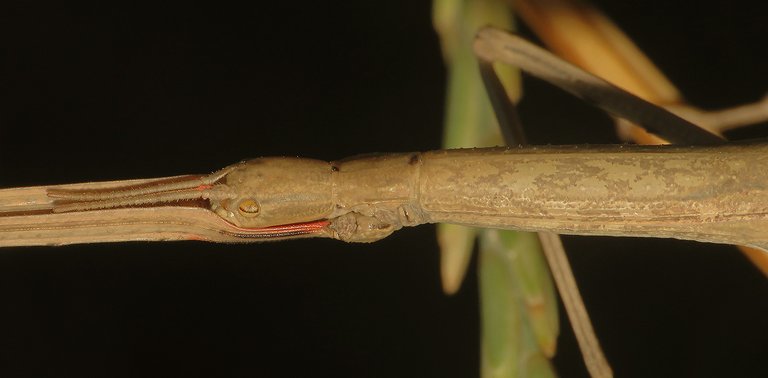
This is a female.
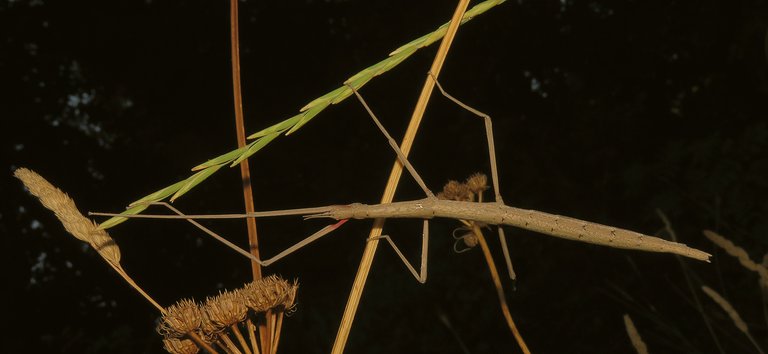
The females are larger than the males. About ten centimeters long. Bacillus rossius is a nocturnal insect that stays still and hidden in plain sight during the day and then moves and feeds after dark.
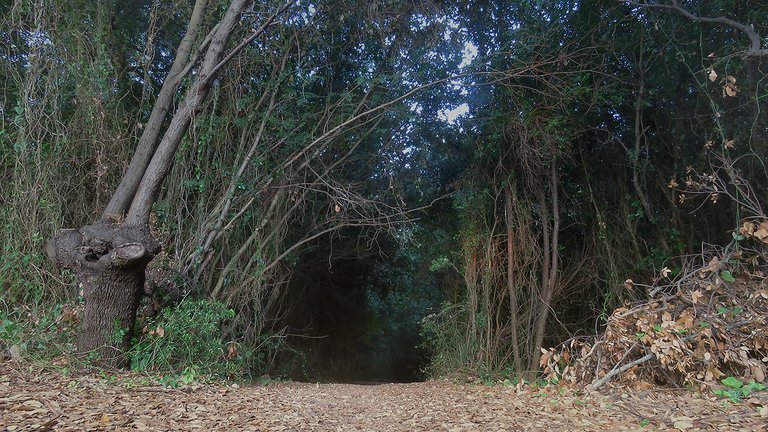
Here you can see the entrance to a dense forest with plenty of thorny undergrowth. It's a dark, mysterious, maybe even enchanted place.
Here you can see the leaves of the Smilax aspera, the thorny climbing plant that makes some places in the forest impenetrable without something that can cut the way through the dense growth of the resilient Smilax aspera.
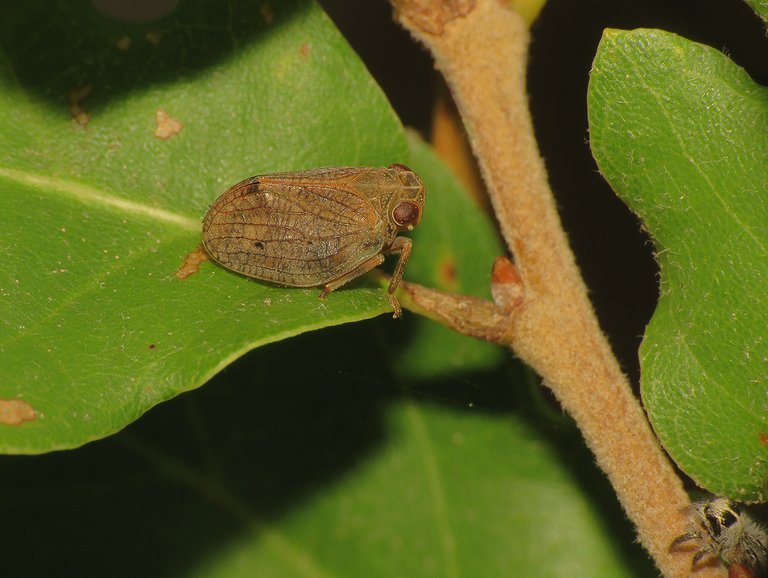
On one of the small oak trees on the edge of the road that leads through the forest ...

... I found a planthopper.

This is the Issus coleoptratus.
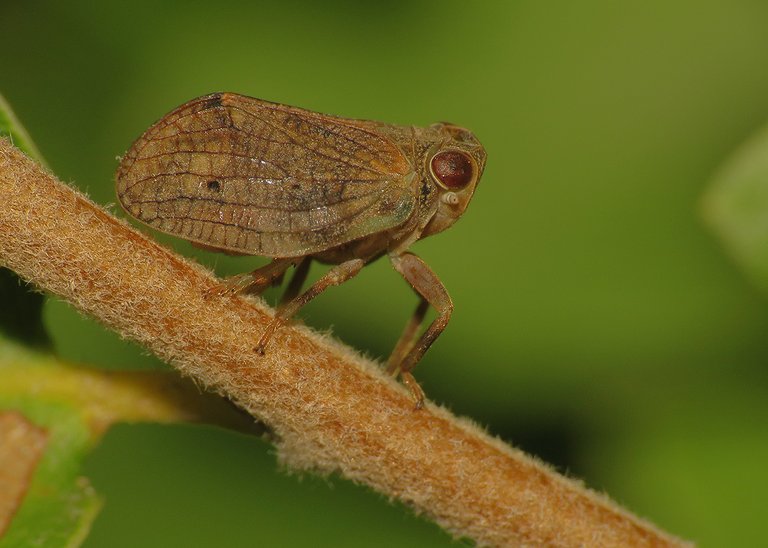
A planthopper from the Issidae family.
The small jumping spider shown in this tryptich was photographed on the branches of the same tree.
I can't tell you the name of the species.
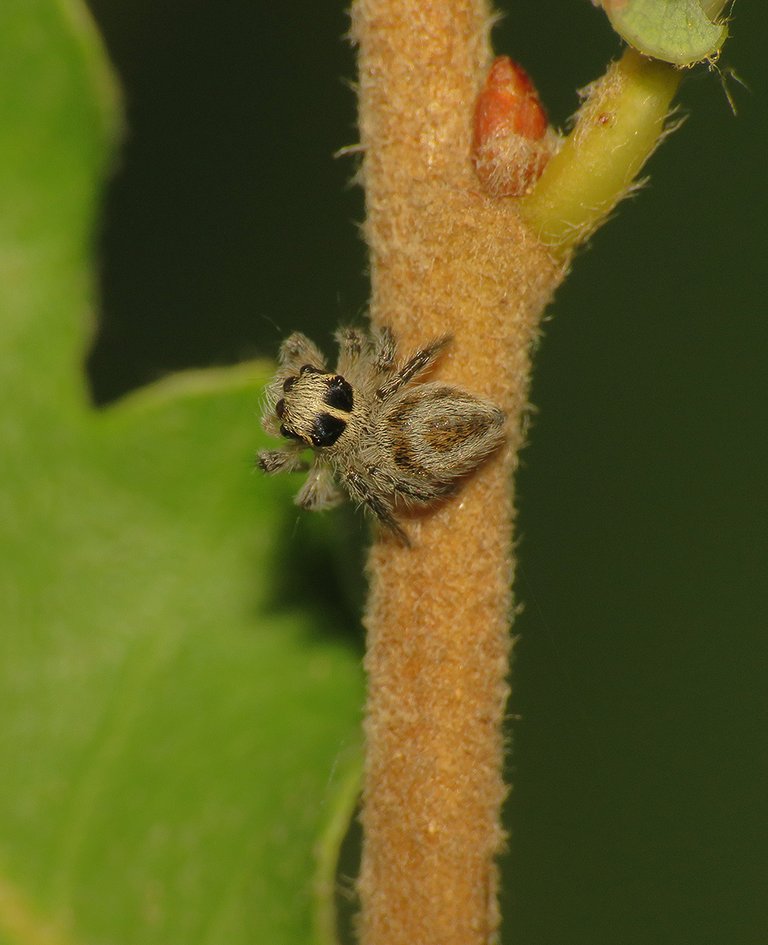
In this photograph, the spider is ready to jump.
When the spider landed on one of the plants under the tree ...
... I continued following the action through the lens of my camera for another minute or two.
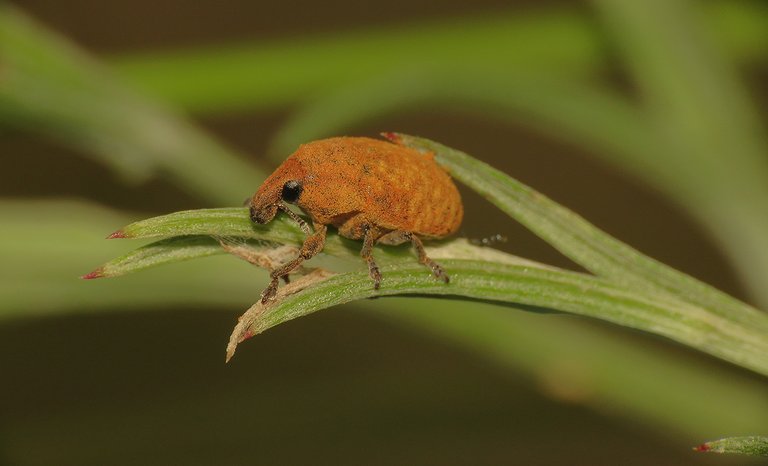
This is a weevil.

I can't tell you the name of the species but the genus is definitively Larinus and the family is Curculionidae. Genus Larinus is present in this area with quite a few very similar-looking species.
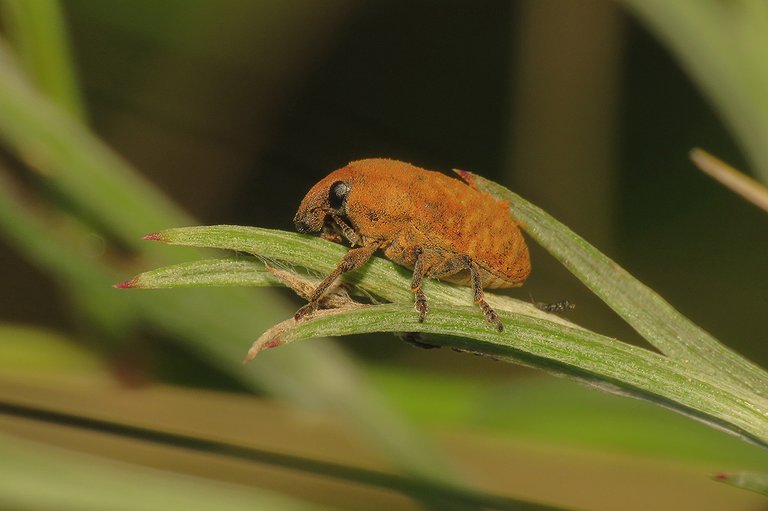
The weevil was photographed on the vegetation under the tree.
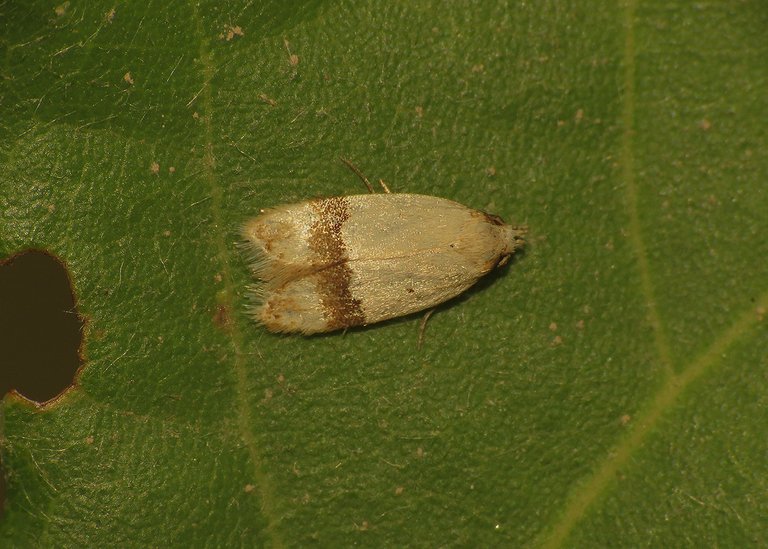
This small moth, the Odites kollarella from the Depressariidae family, was resting on the upper surface of the oak leaf.
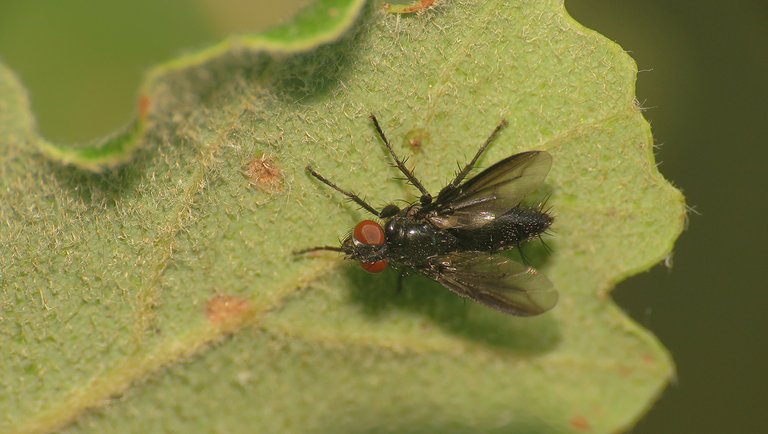
On the underside of another leaf on the same tree, I photographed this fly from the genus Leucostoma of the Tachinidae family. Can't tell you the name of the species.
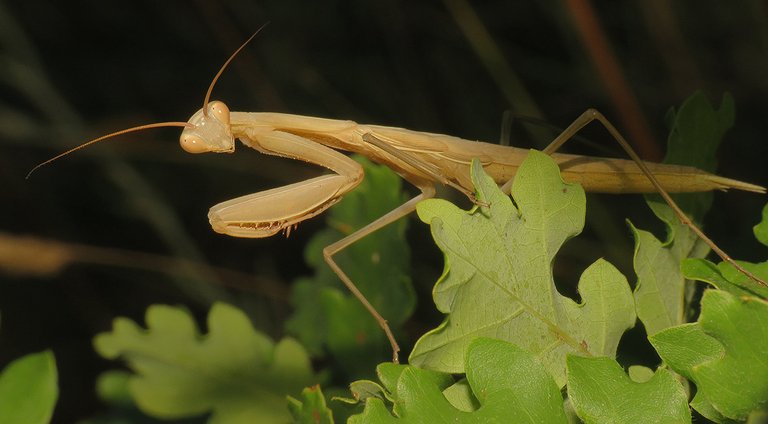
On the foliage of one of the lower branches, I found a mantis.
This is the male nymph of the European mantis (Mantis religiosa).
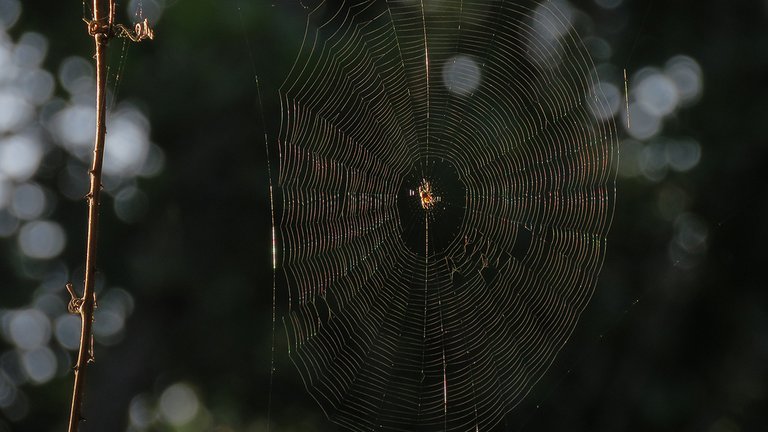
High above me, among the branches of taller trees ...
... a spider from the Araneidae family, probably the Araneus diadematus, has built its web. The scene was a bit too far from me so I couldn't see the details of the spider and therefore I can't be sure about the species.
A bit further on the leaves of some shrub or a climbing plant ...
... I found the nymph of the Issus coleoptratus planthopper.
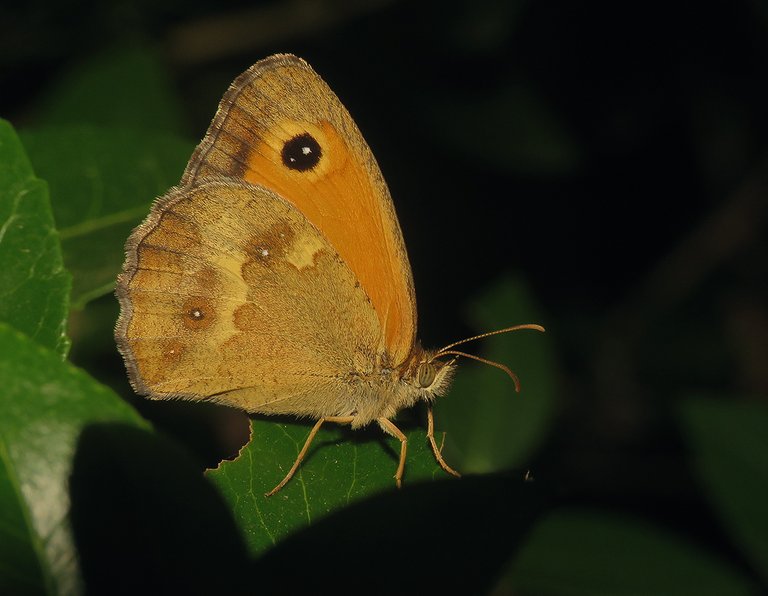
This is the Pyronia tithonus butterfly, while in the following photograph ...
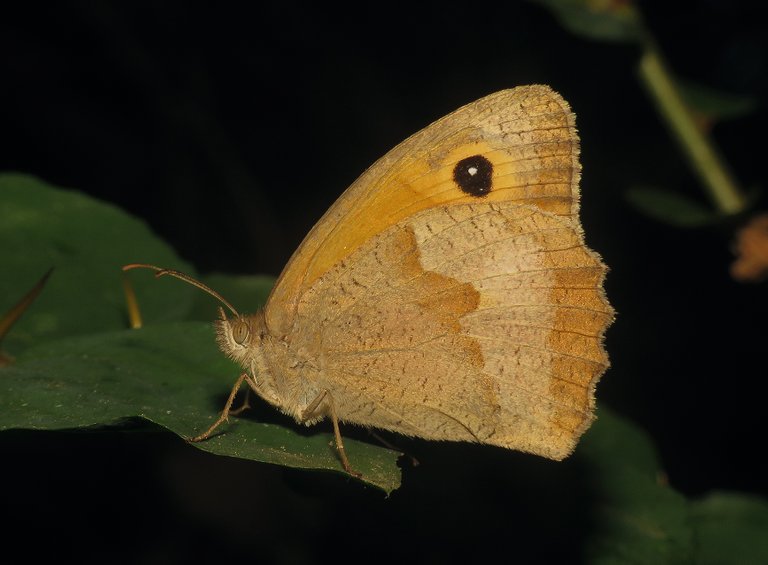
... you can see the fairly similar Maniola jurtina butterfly. Both species belong to the Satyrinae subfamily of the large and varied Nymphalidae family.
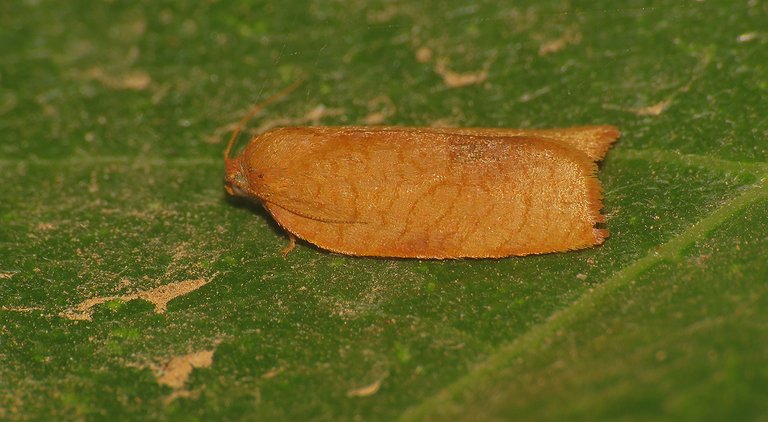
Here you can see a small moth from the Tortricidae family, can't tell you the exact species ...
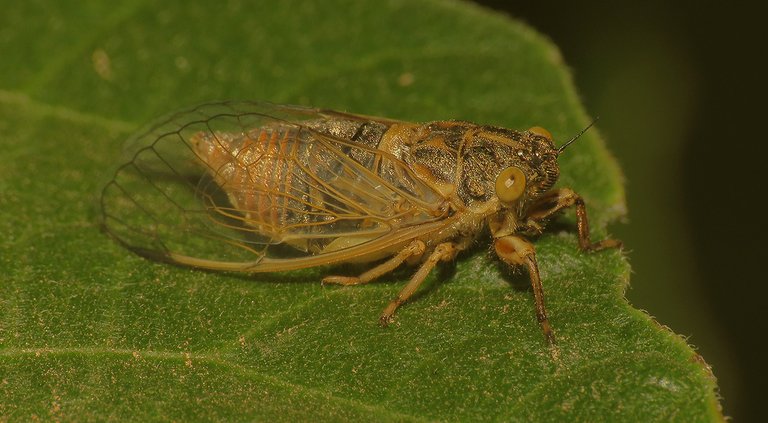
... and the post ends with a cicada. The Cicadetta mediterranea. This species was introduced earlier in the post, near the beginning.
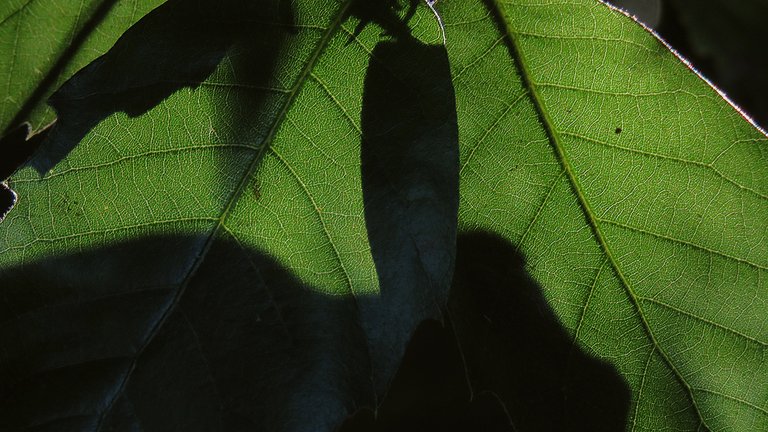
The following links will take you to the sites with more information about some of the protagonists of this post. I found some stuff about them there.
https://en.wikipedia.org/wiki/Epicauta_rufidorsum
https://en.wikipedia.org/wiki/Euchorthippus_declivus
https://www.cicadasong.eu/cicadettinae/cicadetta-mediterranea.html
https://en.wikipedia.org/wiki/Trombidium_holosericeum
https://en.wikipedia.org/wiki/Clinopodium_nepeta
https://en.wikipedia.org/wiki/Philodromus_rufus
https://en.wikipedia.org/wiki/Metcalfa_pruinosa
https://en.wikipedia.org/wiki/Heriaeus_hirtus
https://inaturalist.nz/taxa/501049-Saperda-punctata
https://en.wikipedia.org/wiki/Silver-studded_blue
https://en.wikipedia.org/wiki/Tylopsis_lilifolia
https://en.wikipedia.org/wiki/Bacillus_rossius
https://en.wikipedia.org/wiki/Issus_coleoptratus
https://en.wikipedia.org/wiki/Larinus
https://en.wikipedia.org/wiki/Odites_kollarella
https://bugguide.net/node/view/477879
https://en.wikipedia.org/wiki/Gatekeeper_(butterfly)
https://en.wikipedia.org/wiki/Meadow_brown
https://en.wikipedia.org/wiki/Tortricidae
AND THAT'S IT. HOPE YOU ENJOYED THIS MACRO-SAFARI ACROSS THE MEADOW AND THROUGH THE FOREST IN MY AREA. AS ALWAYS HERE ON HIVE, THE PHOTOGRAPHS ARE MY WORK.
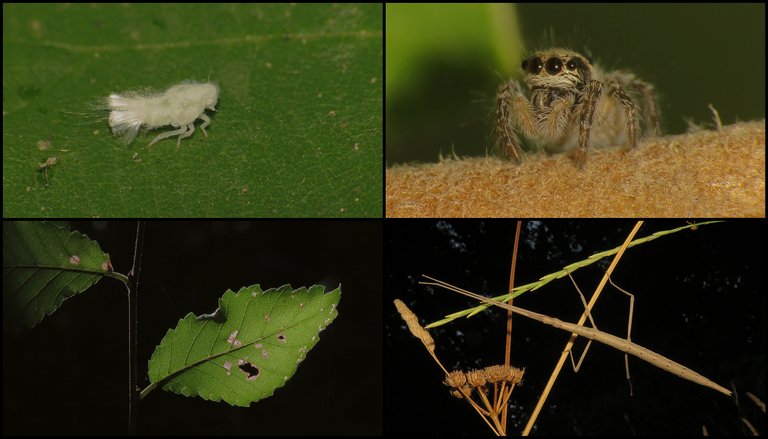


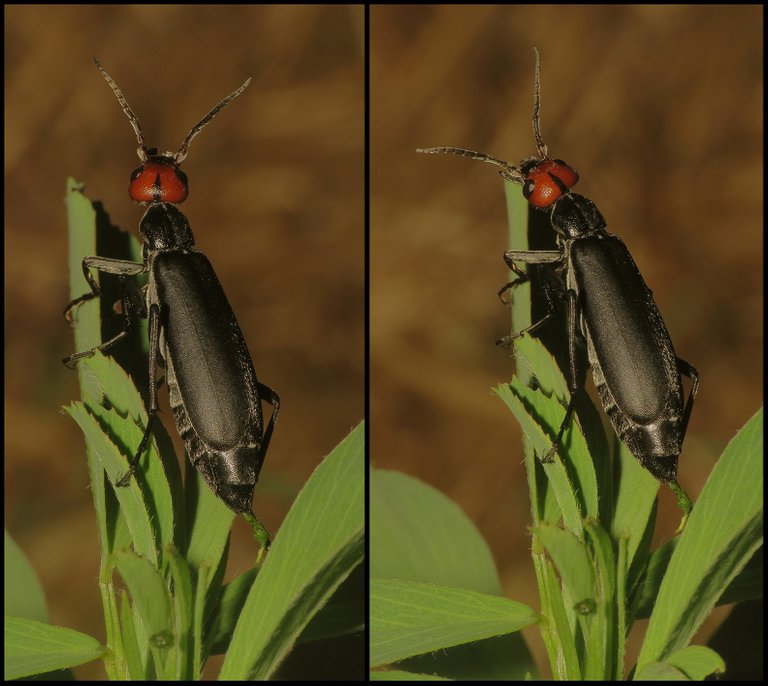

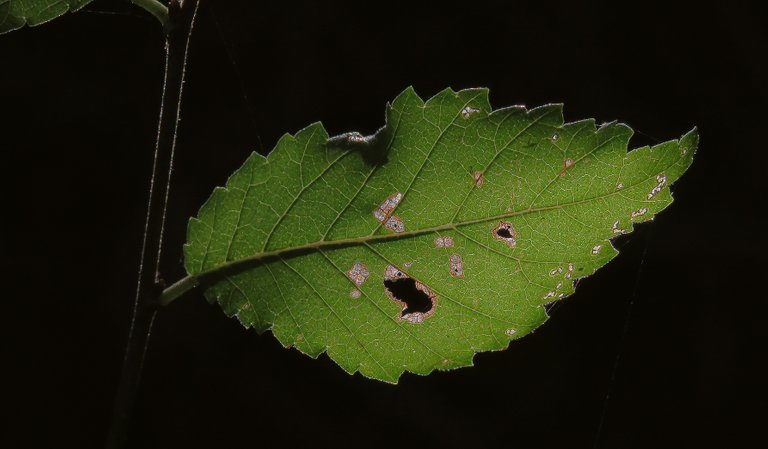

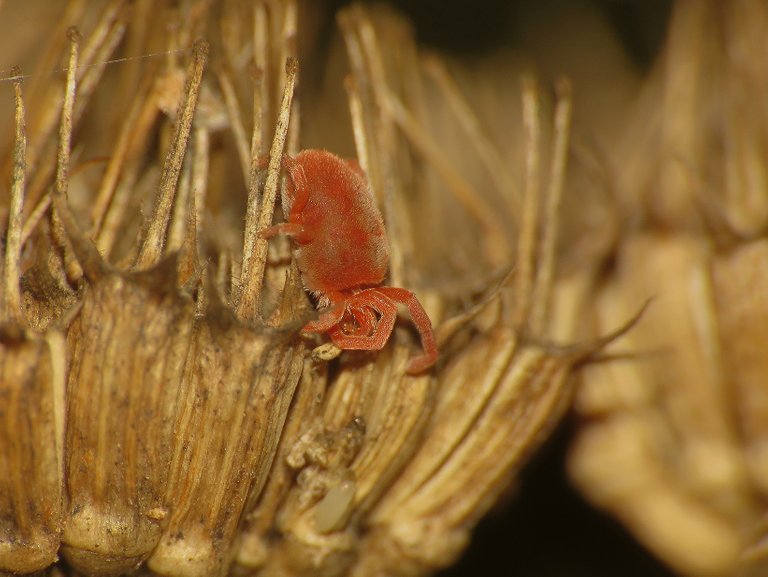
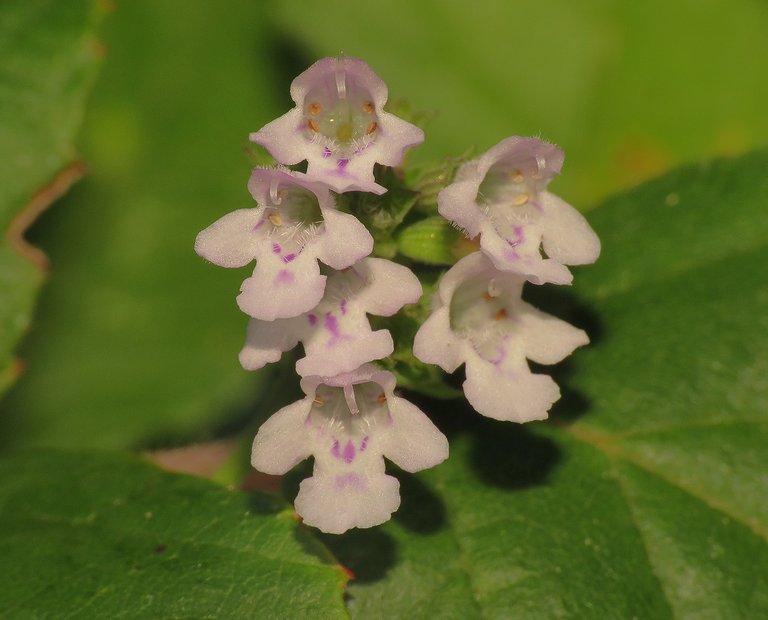

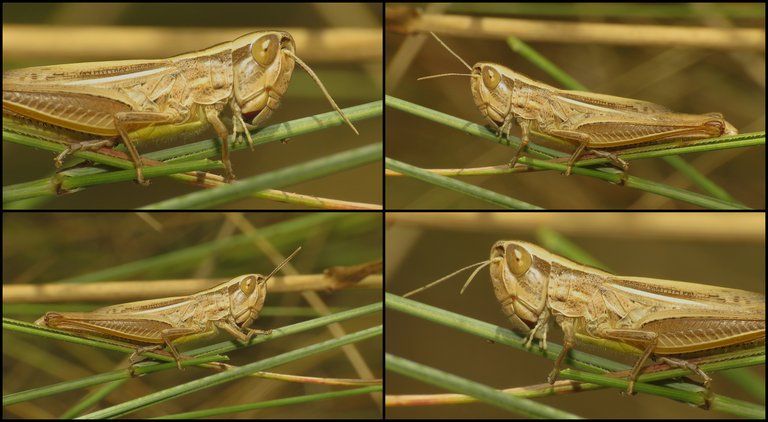
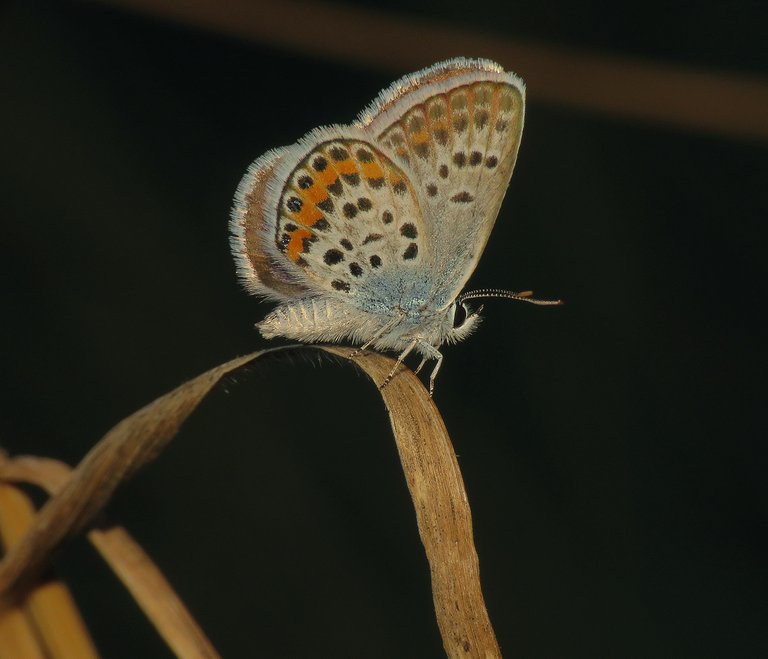
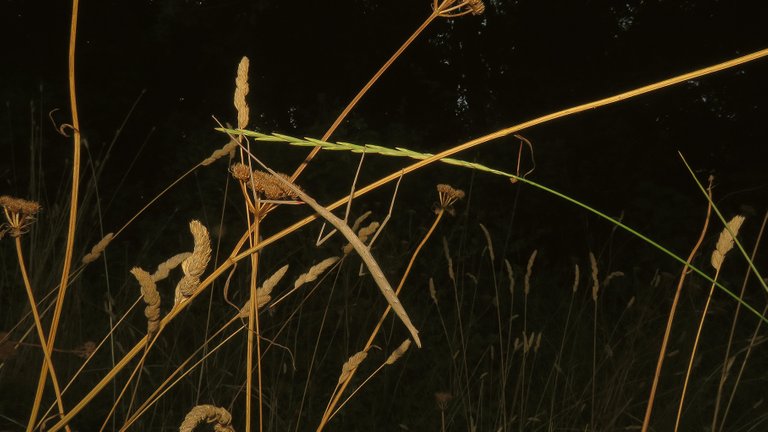



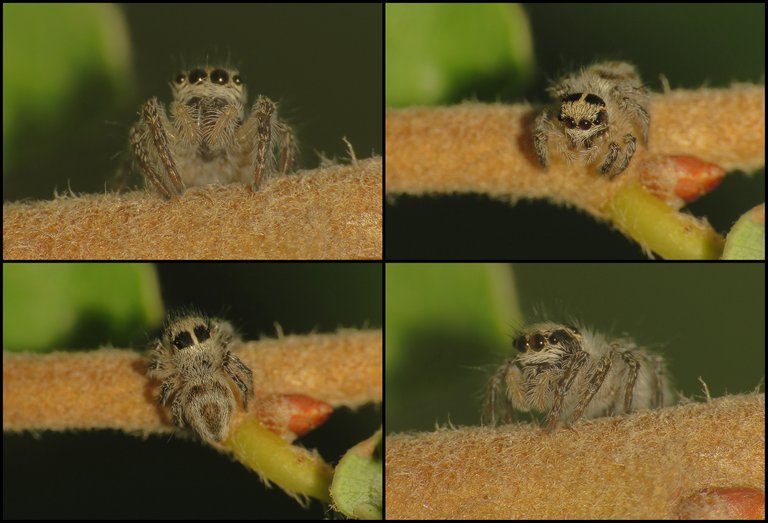
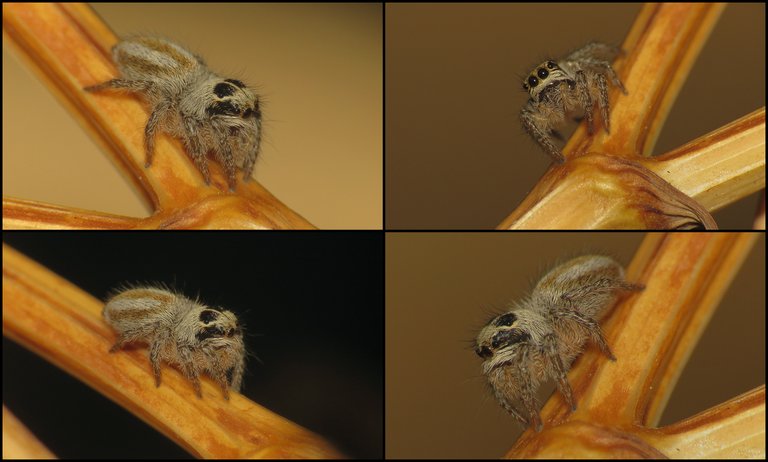

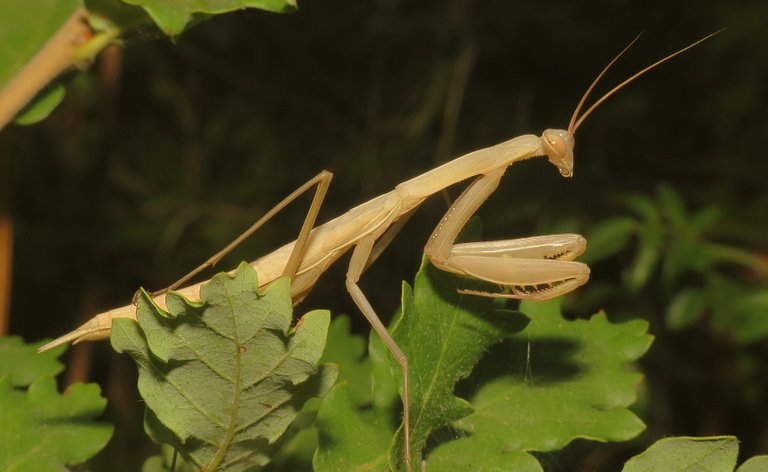
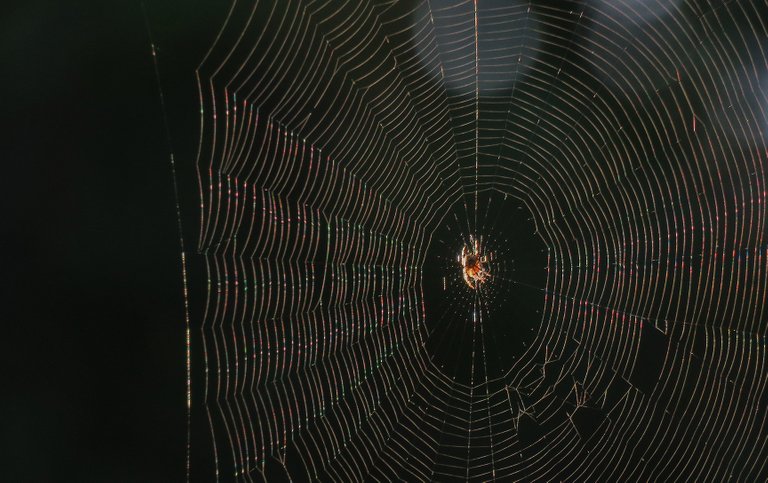
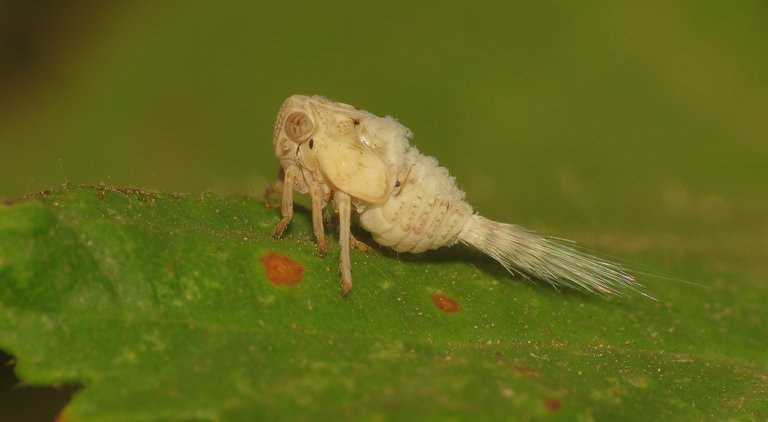

!discovery 30
This post was shared and voted inside the discord by the curators team of discovery-it
Join our community! hive-193212
Discovery-it is also a Witness, vote for us here
Delegate to us for passive income. Check our 80% fee-back Program
All these pictures are very good, and reptiles, insects and other little animals looking very attractive and beautiful. You have done very good work to capture them and share them with us.
You have found many beautiful insects and spiders there which look really nice. You have shared some beautiful photography.
@technicalside check out the jumping spider!!
I see the little eggs om the leaf, I had a few on one plant the other dag and wonderd what type of eggs it was. The red little bug pops on the leaves that was n great find!!
!LUV
@borjan, @misshugo(1/1) sent you LUV. | tools | discord | community | HiveWiki | NFT | <>< daily
NFT | <>< daily
Its funny now that we've watched a video of jumping spiders we happen to see them around everywhere😂 and damn they still remain just as cute!!
There are many unique insects in your post, they are unique and tells us how beautifully the creature has created them. I have never seen Trombidium holosericeum and I have searched about Trombidium holosericeum and found out that it is a species of mite in the family Trombidiidae, also known as the red velvet mite or rain bug. These mites are found in various regions around the world, including Europe, Asia, and North America. The red velvet mite has been used in traditional medicine in some cultures but the use of these mites for medicinal purposes is not well-studied or widely accepted.
the photo of the insect you took is very beautiful
The nymph of the Metcalfa pruinosa planthopper is interesting looking. I wonder if it looks like that for camouflage. Like it's mimicking some sort of plant fluff or something.
Yes. That appearance is good for hiding and some predators find the waxy filaments that cover the nymph's body unpalatable.
That's interesting. A smart adaptation.
Congratulations, your post has been upvoted by @dsc-r2cornell, which is the curating account for @R2cornell's Discord Community.
macro photo capture is very extraordinary and of course it is one of the interesting things to see Thank you of course for sharing something like this,May I know how did you make the leaf background black like that?
Wow what's up sir I am very eager to see your photography 😍😍
Man every time I dive into one of your posts with the cool closeup insect shots, I think I might be in Honey I Shrunk the Kids.
Actually was walking yesterday and thinking I should try and shoot some cool pics like you. How did I do?
I like this photograph very much. Great scene. Is that a crust of ice on the plant?
Loving the mantis pics as usual. The stick insect is also pretty cool. We have neither of those in Scotland (that I know off) - great to see them.
Another amazing and informative Post by you. Before I didn't know much about insects but since I've been reading your post and reading about them, I've learned something. All these insects looks so beautiful. Thanks for sharing.
De todas las fotos las fotos el escarabajo me sorprendió muy interesante y todas las fotos muy originales
The nymph of the Metcalfa pruinosa planthopper is fascinating with all that fur. The black blister beetle sure was a deep black, made me think of an undertaker. I LOVE the detail on the wings of the Cicadetta mediterranea cicada.
Congratulations @borjan! You have completed the following achievement on the Hive blockchain And have been rewarded with New badge(s)
You can view your badges on your board and compare yourself to others in the Ranking
If you no longer want to receive notifications, reply to this comment with the word
STOPCheck out our last posts:
Hi @borjan; it's amazing how many things happen every moment in nature and even when we are there we don't see them or because of their size or because we have to pay close attention. Thanks for sharing such great pictures.

I really admire your photographic skills. The photos are beautiful, and you are also good at macros.
This little spider is very unique, I often find this animal when I'm in the garden and it is considered a quite wild animal because when caught it likes to run around. sir @borjan
Oh, what unpleasant looking insects. Especially spiders. But they are useful in nature